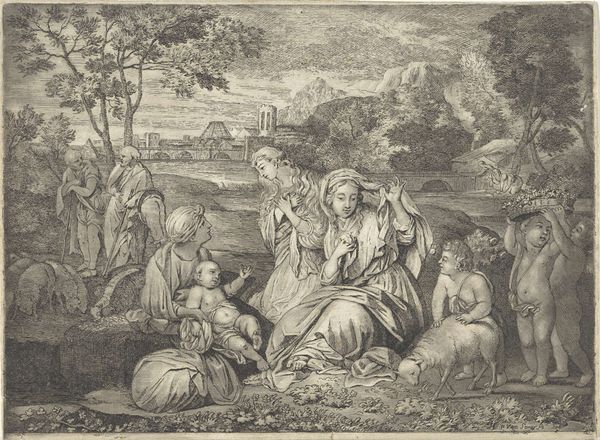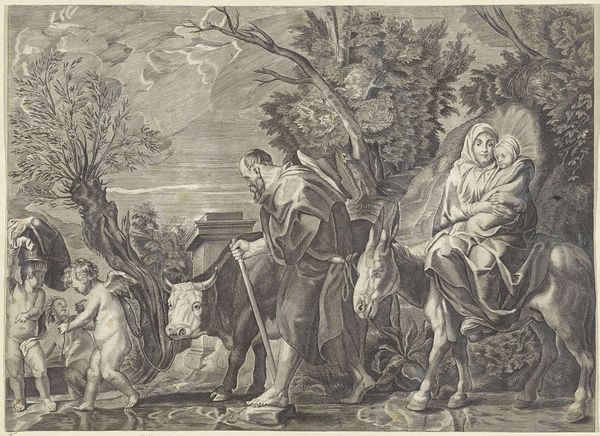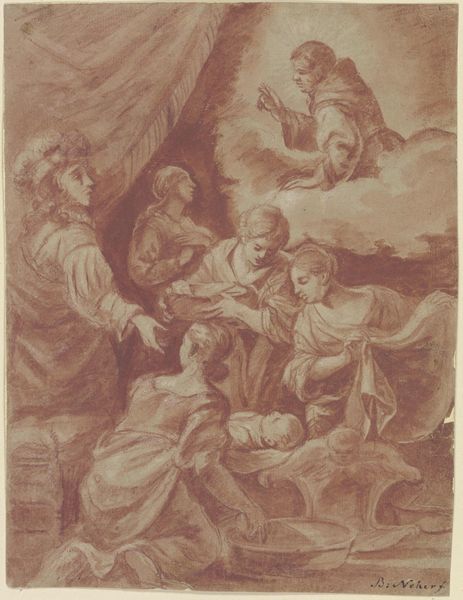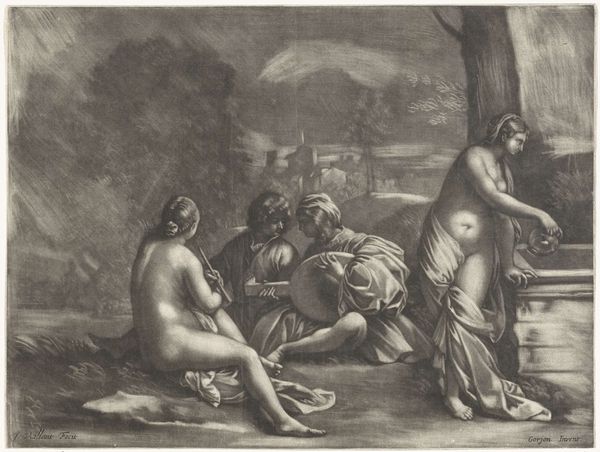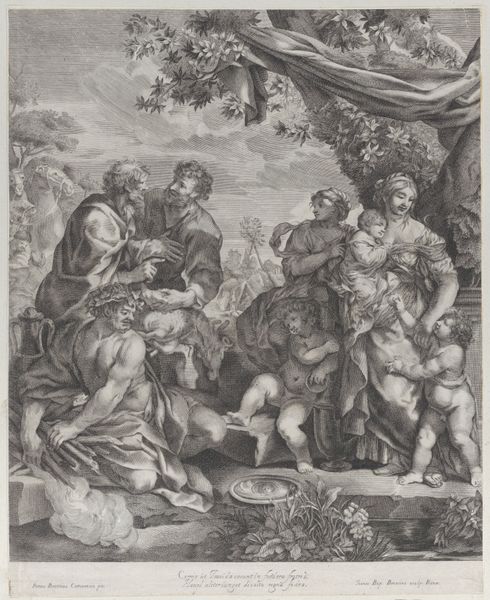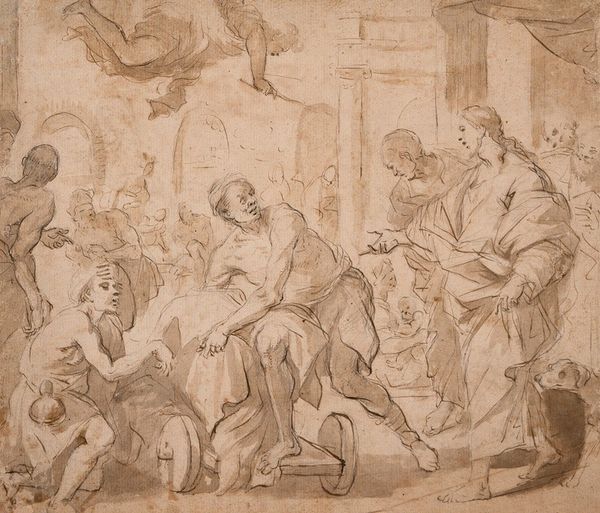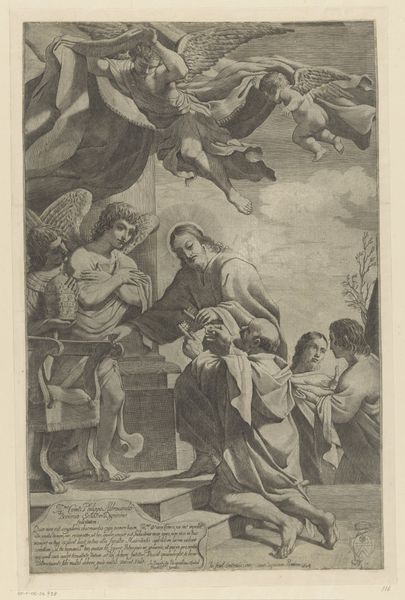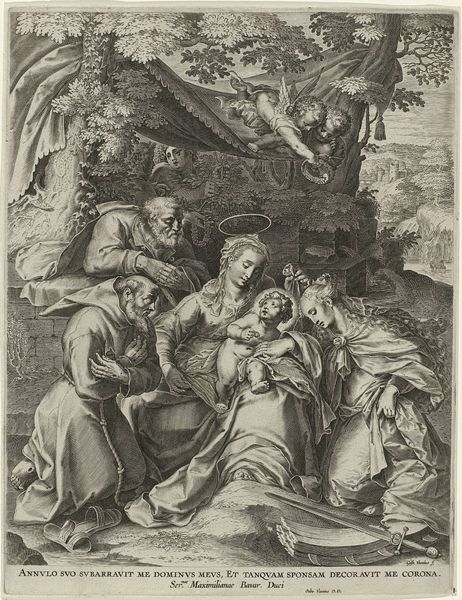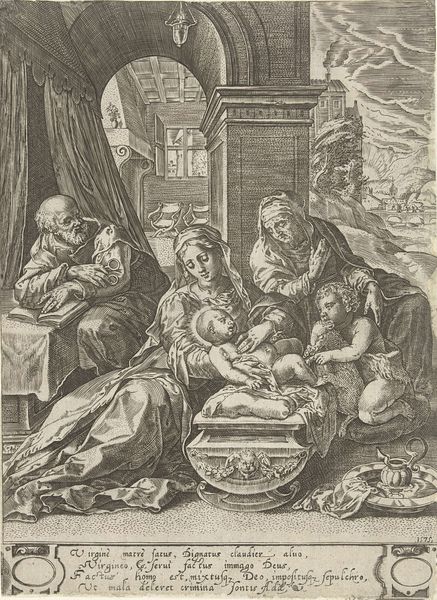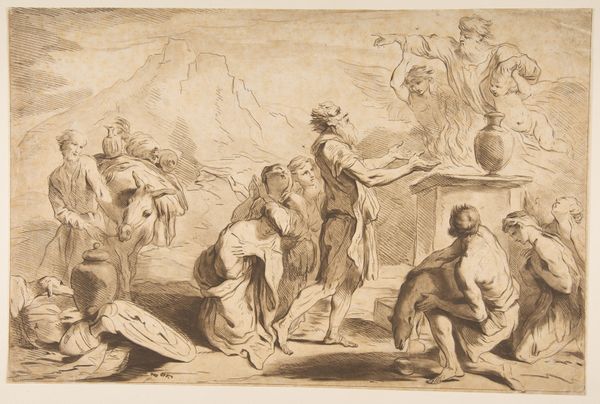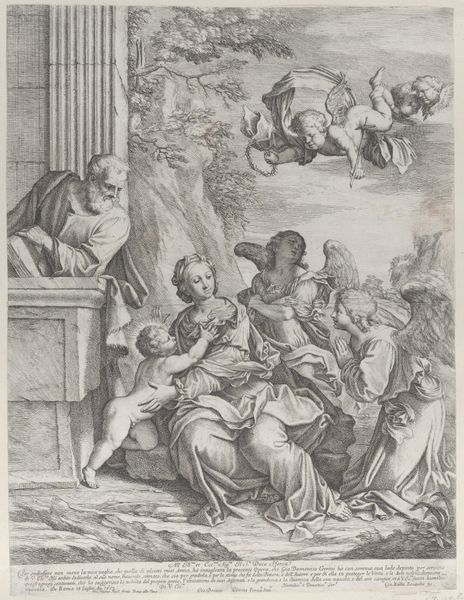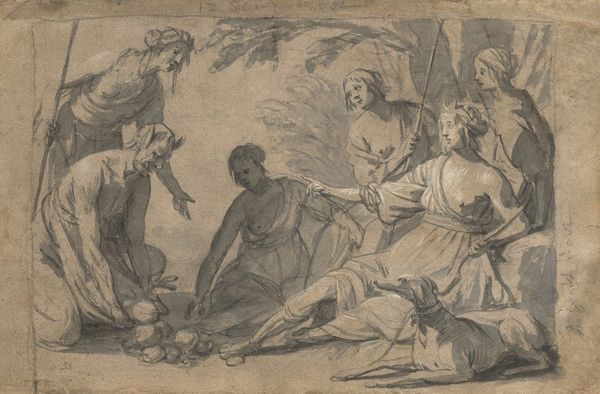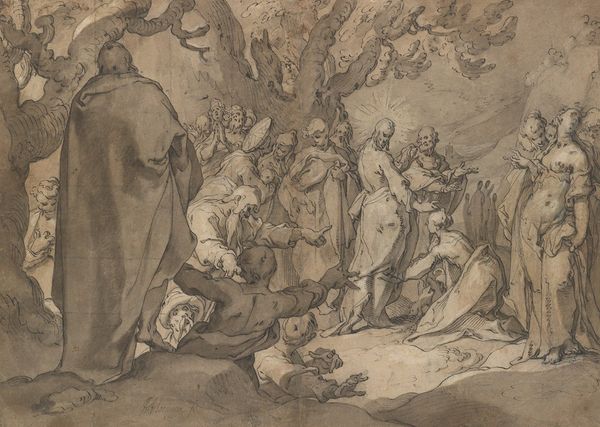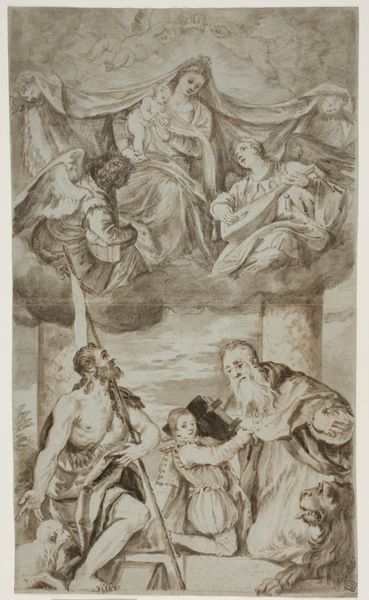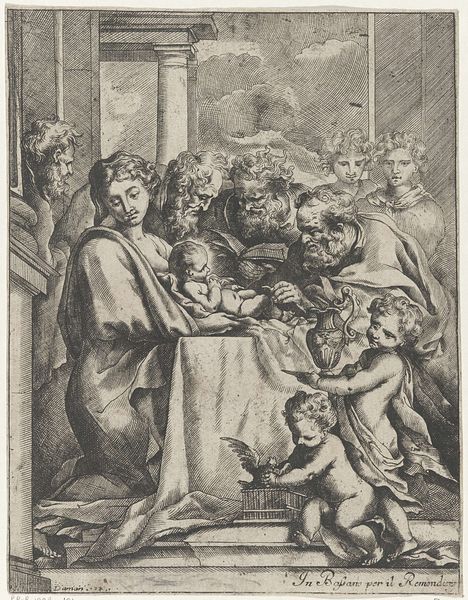
painting, oil-paint
#
narrative-art
#
baroque
#
painting
#
oil-paint
#
landscape
#
classical-realism
#
figuration
#
oil painting
#
genre-painting
#
history-painting
Dimensions: height 87.5 cm, width 103 cm, thickness 8.2 cm, depth 4.1 cm
Copyright: Rijks Museum: Open Domain
Editor: Here we have "The Mystic Marriage of St Catherine," believed to be painted between 1650 and 1720 by Sebastien Bourdon. It’s an oil painting currently residing at the Rijksmuseum. I’m immediately struck by the landscape backdrop – it feels quite separate from the figures in the foreground. What elements of the painting’s composition stand out to you? Curator: The interplay between the landscape and figuration presents a rather fascinating discordance. Consider the colour palette: the earth tones of the background – browns and ochres – are notably divergent from the pale luminosity which bathes the figures. What does this opposition convey to you? Editor: I think the light and colour contrast makes the figures stand out, almost as though they're superimposed onto a pre-existing landscape. It’s a bit disjointed. Is that purposeful? Curator: Perhaps. Observe also the geometric arrangement of the figures – a series of triangular forms intersected by curvilinear elements. Bourdon employs formal arrangements which serve to emphasize and reify certain elements of the composition and to minimize others. Are there compositional forms here that stand out to you? Editor: The strong diagonal created by the figures certainly creates movement, leading my eye across the canvas. Also, I'm intrigued by the contrast between the detailed rendering of the figures versus the looser brushwork in the landscape. Curator: Indeed. Such discrepancies draw our attention to the deliberate artifice employed in its construction. Through a close reading of these structural devices, we can gain access into how meaning is crafted within the parameters of visual art. Editor: So, by analyzing the form, color, and composition, we begin to unlock the artist's intent, regardless of historical context? Curator: Precisely. The formal elements offer us an inherent language. Editor: This has offered a fresh perspective on interpreting Baroque painting.
Comments
No comments
Be the first to comment and join the conversation on the ultimate creative platform.
